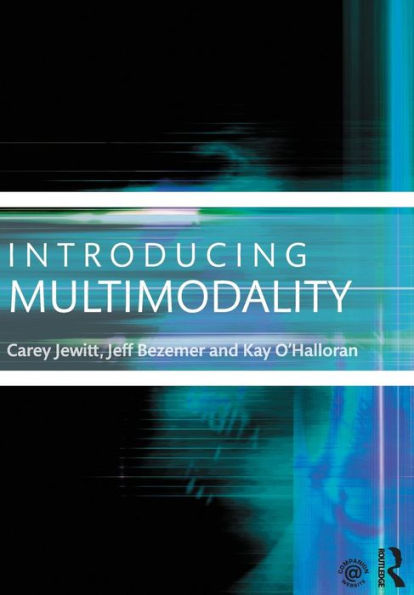This accessible introduction to multimodality illuminates the potential of multimodal research for understanding the ways in which people communicate. Readers will become familiar with the key concepts and methods in various domains while learning how to engage critically with the notion of multimodality. The book challenges widely held assumptions about language and presents the practical steps involved in setting up a multimodal study, including:
- formulating research questions
- collecting research materials
- assessing and developing methods of transcription
- considering the ethical dimensions of multimodal research.
A self-study guide is also included, designed as an optional stand-alone resource or as the basis for a short course. With a wide range of examples, clear practical support and a glossary of terms, Introducing Multimodality is an ideal reference for undergraduate and postgraduate students in multimodality, semiotics, applied linguistics and media and communication studies. Online materials, including colour images and more links to relevant resources, are available on the companion website at www.routledge.com/cw/jewitt and the Routledge Language and Communication Portal.
This accessible introduction to multimodality illuminates the potential of multimodal research for understanding the ways in which people communicate. Readers will become familiar with the key concepts and methods in various domains while learning how to engage critically with the notion of multimodality. The book challenges widely held assumptions about language and presents the practical steps involved in setting up a multimodal study, including:
- formulating research questions
- collecting research materials
- assessing and developing methods of transcription
- considering the ethical dimensions of multimodal research.
A self-study guide is also included, designed as an optional stand-alone resource or as the basis for a short course. With a wide range of examples, clear practical support and a glossary of terms, Introducing Multimodality is an ideal reference for undergraduate and postgraduate students in multimodality, semiotics, applied linguistics and media and communication studies. Online materials, including colour images and more links to relevant resources, are available on the companion website at www.routledge.com/cw/jewitt and the Routledge Language and Communication Portal.

Introducing Multimodality
232
Introducing Multimodality
232Paperback(New Edition)

Product Details
| ISBN-13: | 9780415639262 |
|---|---|
| Publisher: | Taylor & Francis |
| Publication date: | 03/31/2016 |
| Edition description: | New Edition |
| Pages: | 232 |
| Product dimensions: | 6.88(w) x 9.69(h) x (d) |
